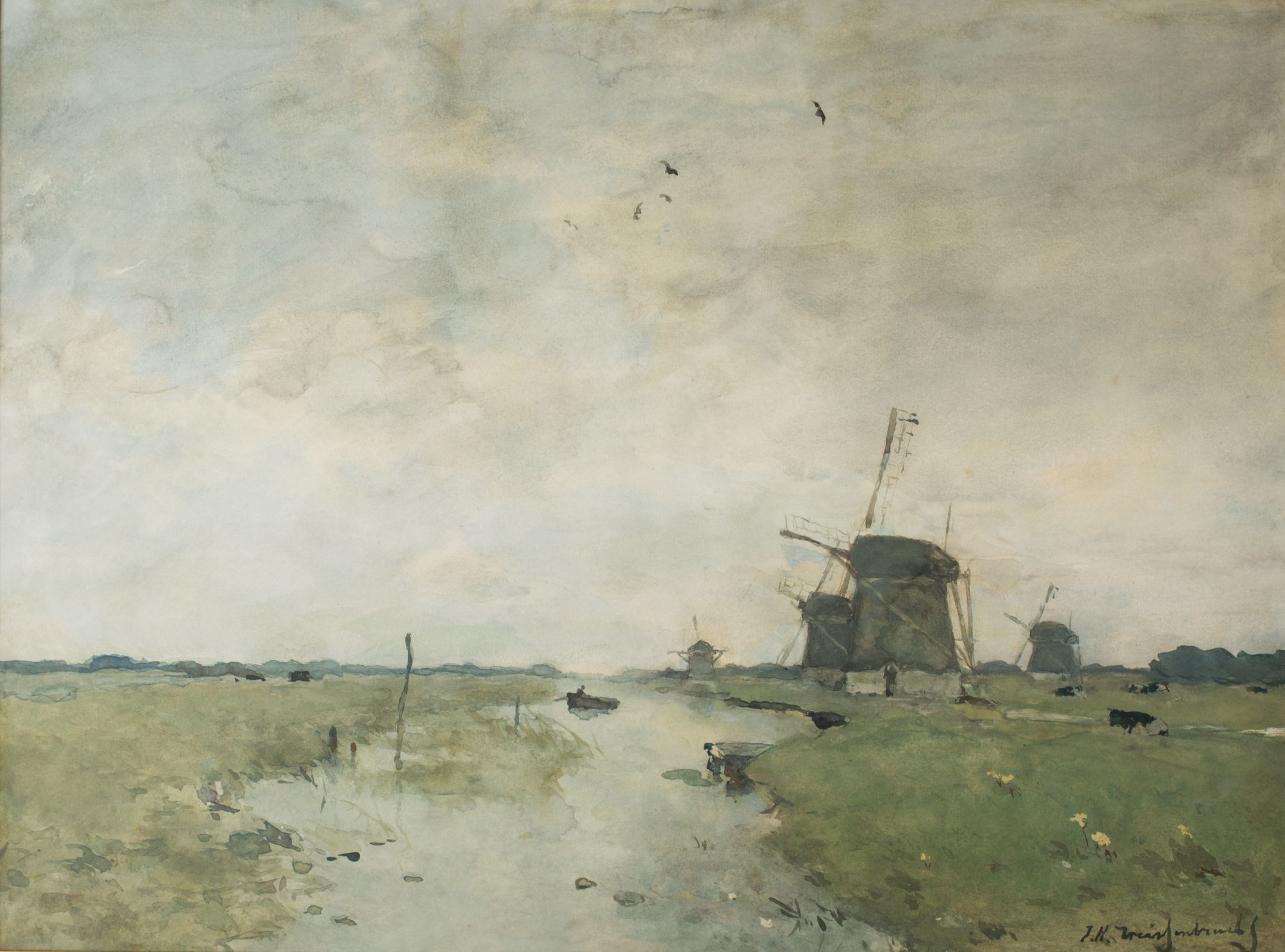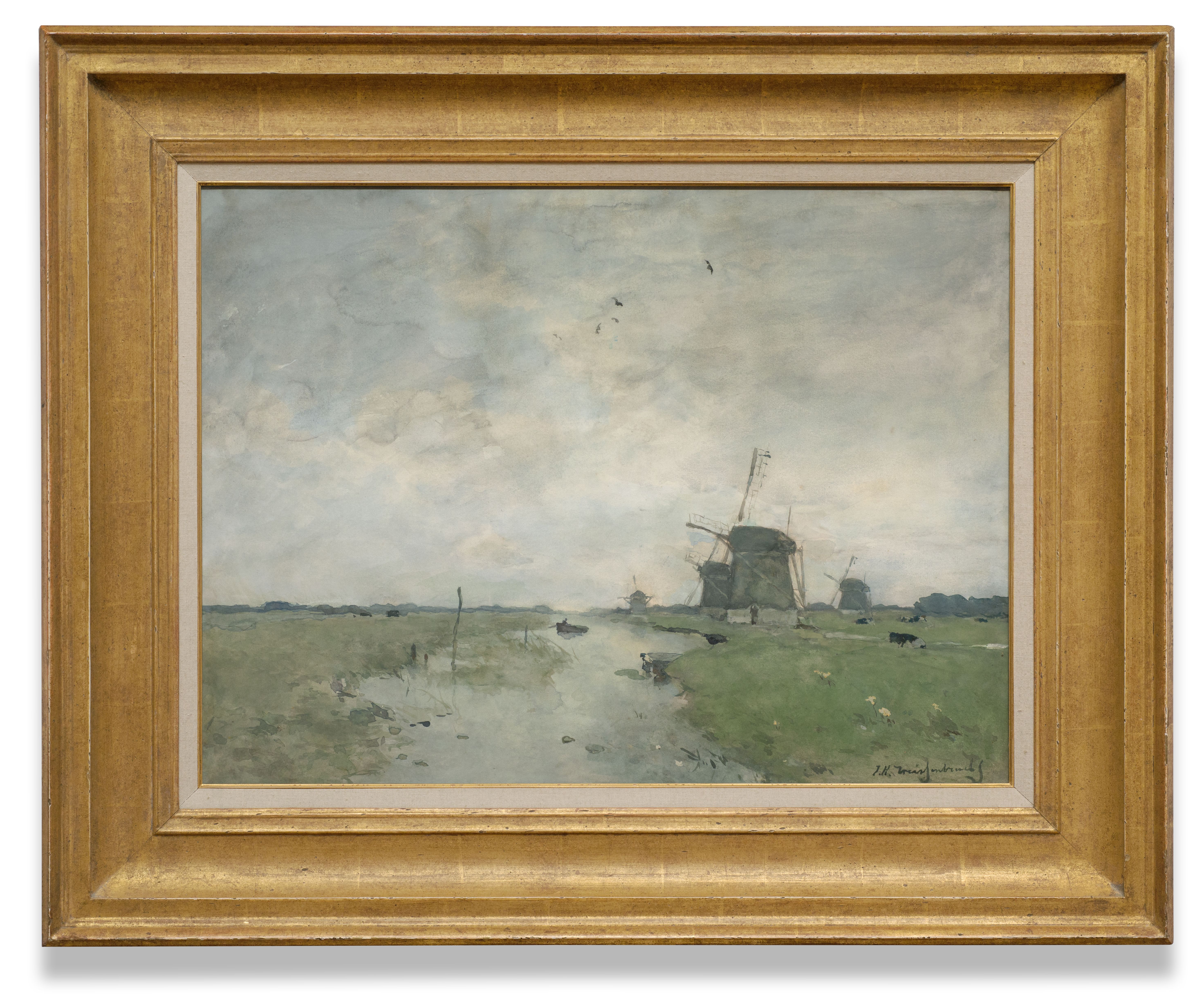J.H. (HENDRIK JOHANNES) WEISSENBRUCH 1824 Den Haag - 1903 Den Haag Windmills in the Polder
Aquarel/papier: 43,5 x 59,5 cm
- This artwork can be viewed in our gallery
- Call us for more information: +31 26 361 1876
- World wide shipping available
Width: 59,5 cm
Over J.H. (HENDRIK JOHANNES) WEISSENBRUCH
Little is known about J.H. Weissenbruch. What we know comes from stories and anecdotes that were written down at the end of his life, when he reached fame. He is considered the best example of the Hague School but his art and influence reach beyond that period. The Netherlands has a long tradition of landscape painters. With huge skies above a very flat land by the sea light will always be an important factor; the wind is constantly moving the clouds around in a play of sun and shadow. The 17th century painters, like Ruysdael, were the leading figures in this tradition. Weissenbruch used to visit the Mauritshuis museum in The Hague to study not only Ruysdaels paintings but also those by Vermeer. Weissenbruch’s skies though cannot be compared to the 17th century models. But the dramatic effects can. After 1865 individuality and personality became more important for Dutch artists: deviation from old rules in the art of painting became standard procedure. Weissenbruch had come to the realisation that the reduction of detail and a certain degree of mistreatment could generate a beautiful visual effect as well. He painted his landscapes in his studio. He sketched outside in charcoal and crayon, capturing his quick impressions of changing light or the reflection of the sun in water but he painted at home: the translation of the artist’s mental world into paint using all his energy to convince us of this force of nature.

